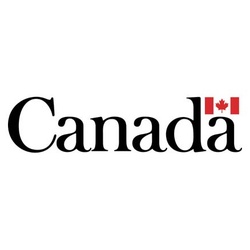Overview: Ontario food manufacturing grants and funding in 2025
Ontario’s food and beverage manufacturing sector can access a broad mix of non-repayable grants, cost-share funding, incentives, rebates, and tax credits designed to support growth, modernization, and compliance. Organizations use these programs to finance processing line upgrades, robotics and automation, packaging innovation, HACCP and GFSI certification, energy efficiency, cold storage expansion, export development, and workforce training. This guide consolidates the landscape for food manufacturing grants in Ontario, including agri-food processing grants, equipment and automation funding, food safety support, traceability, sustainability, clean technology, and regional development programs. It covers opportunities relevant to small food businesses, mid-sized processors, large plants, and beverage manufacturers across the GTA, Southwestern Ontario, Eastern Ontario, Northern Ontario, and rural communities.
How Ontario’s grant ecosystem is organized
Ontario food processors interact with multiple layers of support:
- Federal programs for innovation, export, and R&D credits.
- Provincial programs focused on manufacturing productivity, regional development, and workforce training.
- Agri-food cost-share funding that targets equipment, food safety, traceability, and environmental performance.
- Utilities and energy-efficiency incentives that reduce refrigeration, compressed air, steam, and process energy costs.
- Sector organizations that fund collaborative R&D, pilot trials, and commercialization.
Within this ecosystem, applicants commonly explore Ontario food processing funding programs that support capital investment funding and modernization funding, as well as export development funding, training incentives, and sustainability funding. Programs may be competitive or first-come, operate in timed intake windows, and require cost-share matching grants. Understanding intake timing, eligible costs, and documentation is central to success.
Benefits: why food processors use grants and incentives
- De-risk capital expenditures for robotics, conveyors, depalletizers, and packaging automation through equipment grants for food processing in Ontario.
- Accelerate compliance with HACCP, SQF, BRCGS, allergen control, sanitary design, and CFIA readiness using food safety grants in Ontario.
- Improve plant efficiency with energy incentives, heat recovery, refrigeration upgrades, heat pumps, and compressed air optimization grants.
- Expand cold storage and optimize the cold chain using cold storage grants Ontario, cold room expansion funding, and cold chain monitoring grants.
- Scale new products via lab equipment grants, shelf-life testing funding, pilot plant funding, and commercialization funding for food innovation.
- Build export capacity using export grants for food manufacturers in Ontario, along with market expansion, trade show support, and export packaging compliance grants.
- Strengthen workforce skills through workforce training grants in food manufacturing, supervisor training, apprenticeship incentives, and newcomer hiring support.
Types of support available to Ontario food and beverage manufacturers
Equipment and automation funding for production and packaging
Food processors frequently pursue processing line upgrade grants in Ontario to finance mixers, ovens, cookers, fillers, depositors, slicers, sorters, conveyors, robotic palletizers, and case packers. Packaging innovation grants in Ontario can support labelers, printers, vision inspection systems, metal detectors, x-ray, and end-of-line automation. Many programs recognize robotics and automation funding in Ontario manufacturing as a driver of productivity, quality, and throughput. Related projects may include sanitary design equipment funding, hygienic flooring/walls grants for food plants, and cleaning and sanitation equipment funding.
The equipment focus often extends to ERP/MES software funding for food manufacturing, warehouse automation grants for food distribution, and barcode/RFID implementation grants to enhance traceability. Applicants typically develop vendor quotes, layouts, installation schedules, and commissioning plans that align with intake windows and eligibility periods.
HACCP, food safety, and certification support
HACCP grants in Ontario and broader food safety grants enable facilities to implement or upgrade preventive controls, allergen segregation, and recall readiness. Programs may support GFSI certification grants (e.g., SQF, BRCGS), food safety certification funding, allergen labeling support grants, and food recall readiness training funding. Projects often include sanitary equipment upgrades, hygienic surfaces, CIP (clean-in-place) systems, vision inspection for label verification, and quality assurance funding in food plants. Traceability grants in Ontario cover barcode systems, lot coding, ERP integrations, and documentation upgrades that align with CFIA compliance funding.
Sustainability, clean technology, and environmental performance
Sustainability grants for the food industry in Ontario help reduce energy consumption, water use, and waste. Processors frequently explore energy efficiency grants for food plants in Ontario, including energy audits grants for manufacturing, heat recovery grants for food processing, refrigeration upgrade funding, and compressed air optimization grants. Water conservation grants for food manufacturing and wastewater treatment funding for food plants target process water reuse, membrane filtration, and pretreatment systems. Clean technology grants for the food sector in Ontario may support CHP/biogas, renewable energy grants for food plants, solar for manufacturing grants, heat pump grants for cold storage, and greenhouse gas reduction funding. Waste reduction grants address food waste upcycling, by-product valorization, sustainable packaging grants, recyclable/compostable packaging, and material right-sizing.
Cold storage, warehousing, and logistics
Cold storage grants in Ontario and cold room expansion funding support freezer rooms, spiral freezers, racking, insulated panels, doors, and defrost/evaporation controls. Refrigeration energy incentives for food processors in Ontario can underwrite variable-speed drives, floating head pressure, and high-efficiency compressors. Cold chain optimization grants and cold chain monitoring funding help maintain product quality, extend shelf life, and manage logistics costs. Warehouse automation grants and forklift/battery electrification funding further enhance distribution performance and reduce emissions.
Product development, R&D, and testing
For processors pursuing innovation, R&D funding for food processing in Ontario supports formulation, pilot-scale trials, sensory evaluation, shelf-life testing funding, and lab equipment grants for food manufacturers in Ontario. Product development funding, pilot plant funding, innovation vouchers in the food sector, and collaboration grants with universities can de-risk scale-up. Tax incentives such as SR&ED tax credits for food processing R&D in Ontario complement non-repayable grants, while IRAP-style funding for food tech in Ontario can support prototyping and technology adoption. Many applicants combine feasibility study funding, pilot funding, and commercialization funding to move from bench to plant.
Digitalization, traceability, and cybersecurity
Traceability software grants in Ontario, ERP/MES software funding, and barcode/RFID implementation grants improve data integrity, real-time visibility, and recall readiness. Quality modules, SPC dashboards, and OEE tracking can be eligible where tied to productivity outcomes. Cybersecurity funding for manufacturers in Ontario helps food companies secure OT/IT systems, meet customer requirements, and protect traceability data.
Workforce development, hiring, and training
Workforce training grants for food manufacturing in Ontario cover food safety training, supervisor training grants for manufacturing, and apprenticeship grants. Applicants may access hiring incentives for youth, newcomers, and underrepresented groups, as well as occupational health and safety funding for manufacturing and accessibility upgrades grants for facilities. Programs often fund job-specific upskilling tied to new equipment, digital systems, or compliance standards.
Regional programs and geographic opportunities in Ontario
Southwestern and Eastern Ontario Development Funds
Food processors in London, Windsor–Essex, Hamilton–Niagara, and the broader Southwest explore the Southwestern Ontario Development Fund (SWODF) to support plant expansion, modernization, and job creation. In Eastern Ontario, the Eastern Ontario Development Fund (EODF) can fund similar projects for processors in Ottawa, Kingston, Cornwall, and surrounding regions. These regional development grants for Ontario manufacturers often target capital projects, automation, and productivity improvement funding.
Northern Ontario and regional ecosystems
Northern Ontario food manufacturing funding often involves the Northern Ontario Heritage Fund Corporation (NOHFC), which supports facility expansion, equipment purchases, and job creation. Processors in Sudbury, North Bay, Sault Ste. Marie, Thunder Bay, and rural communities may combine NOHFC with agri-food cost-share programs and energy incentives. Indigenous food business grants and rural food processing funding can further bridge gaps for remote and rural plants.
City and regional clusters across Ontario
- GTA food manufacturing funding: Toronto, Mississauga, Brampton, Vaughan, and Markham processors frequently blend export readiness funding with packaging line automation grants.
- Hamilton–Niagara food processing grants: modernization grants for food processors and refrigeration incentives are common.
- Kitchener–Waterloo–Cambridge and Guelph: agri-food innovation grants, pilot trials, and collaboration with universities and research centers.
- Ottawa food manufacturing grants: automation, export development, and cybersecurity funding.
- Durham, York, Halton, Peel, Simcoe: manufacturing and logistics-focused projects, including cold chain and warehouse automation.
- London and Windsor–Essex: advanced manufacturing projects, ready-to-eat facility upgrades, and workforce development.
Eligibility and what projects qualify
Eligibility varies by program but commonly includes:
- Applicants: for-profit incorporated businesses in Ontario; small food business grants for Ontario SMEs and mid-sized processors; beverage manufacturing grants for breweries, wineries, and non-alcoholic beverage plants; some streams also consider not-for-profits or collaborations.
- Activities: equipment purchases, automation, packaging lines, traceability systems, energy/water/waste reduction, food safety certification and infrastructure, product development, export marketing, and workforce training.
- Costs: capital equipment, installation, commissioning, professional services, certification fees, training, and reasonable project management.
- Timing: projects typically must start after approval; some programs run intake windows with firm deadlines; retroactive costs are often ineligible.
- Scale: Ontario cost-share funding for food processors usually requires matching funds; stacking with federal incentives and tax credits is sometimes allowed within limits.
Applicants should review program guides for minimum/maximum project sizes, eligible NAICS codes, geographic boundaries, and documentation requirements. Many cost-share programs require that projects deliver measurable productivity, sustainability, compliance, or employment outcomes.
The application process: step-by-step
1. Define objectives and outcomes: tie equipment or training to measurable productivity, quality, safety, or sustainability gains.
2. Build an eligible budget: secure itemized vendor quotes for equipment, automation, installation, and software; identify training curricula and certification costs.
3. Develop a project plan and timeline: show site readiness, utilities, construction phases, commissioning, and risk mitigation.
4. Prepare supporting documents: financial statements, incorporation documents, site permits, environmental and CFIA compliance, export plans, and HR/training plans.
5. Align to intake windows: many Ontario food processor grants run time-bound intakes with application deadlines; plan to submit early.
6. Submit and respond: provide clarifications quickly; some programs require site visits or additional documentation.
7. Track and report: if approved, maintain records, progress reports, and proof of payment; monitor milestones for claims.
Funding for specialized certifications and markets
Food companies serving cultural or dietary markets may seek halal certification funding in Ontario or kosher certification funding in Ontario. Grants for allergen labeling support, gluten-free facility conversion funding, and ready-to-eat facility upgrade grants can assist with market access and compliance. Export packaging compliance grants and trade show funding for food manufacturers in Ontario help reach international buyers while meeting labeling and standards requirements.
Comparing grants, loans, tax credits, and incentives
- Non-repayable grant or contribution: typically cost-share funding that reimburses a percentage of eligible costs.
- Incentive or rebate: often paid after installation or verification (e.g., energy incentives).
- Tax credit: e.g., SR&ED for eligible R&D activities, claimed through the tax system.
- Loans: used to finance remaining costs; some programs blend loans and grants.
A balanced stack may combine Ontario food processing grants with federal credits, utility rebates, and regional development funds, respecting stacking limits and timing.
Common pitfalls and how to avoid them
- Starting work before approval: many programs disallow retroactive costs; wait for written approval.
- Weak outcomes: quantify productivity, yield, defect reduction, energy savings, or GHG reductions with baseline and target metrics.
- Incomplete budgets: include installation, commissioning, software, training, and ancillary items (e.g., guarding, hygienic flooring).
- Missing documentation: prepare financials, permits, and compliance letters early.
- Poor scheduling: intake windows close quickly; build a 12–18 month funding calendar.
Example 12–18 month funding roadmap for a food plant
- Months 1–3: Conduct energy audit; define automation needs; gather equipment quotes for conveyors, robotics, and vision inspection; scope HACCP upgrades and allergen segregation.
- Months 4–6: Apply to Ontario cost-share funding for line modernization; apply to energy efficiency rebates (refrigeration upgrade funding, compressed air optimization grants); submit training grant for operator and supervisor upskilling.
- Months 7–9: If pursuing export markets, submit export readiness funding, market research and branding and packaging design grants; book trade shows; plan export packaging compliance.
- Months 10–12: Submit traceability software grants (ERP/MES, barcode/RFID); implement CIP system funding; install hygienic flooring/walls; complete food safety certification audits.
- Months 13–18: Launch product development funding for line extensions; conduct shelf-life testing; explore clean technology grants for heat pumps and heat recovery; evaluate SR&ED eligibility for process R&D.
Long‑tail use cases and sector nuances
- Dairy processing grants in Ontario: separators, pasteurizers, HTST systems, and hygienic piping.
- Meat processing plant grants Ontario: RTE controls, cook-chill, smokehouses, sanitation equipment, and allergen segregation.
- Bakery grants Ontario: depositing, proofing, ovens, slicers, and packaging lines.
- Beverage manufacturing grants Ontario: canning lines, bottling line funding, carbonation control, and cold storage optimization.
- Plant-based protein processing grants Ontario: extrusion, drying, milling, and allergen control.
- Small food business grants Ontario: microgrants and scaled intakes tailored to SMEs, including rural food processor grants.
Key takeaways
- Ontario food manufacturing grants span equipment, automation, HACCP, traceability, energy, water, waste, cold storage, export, and training.
- Regional development funds can significantly leverage plant expansion and modernization.
- Successful applications quantify outcomes, align to intake windows, and present complete budgets and documentation.
- Combining grants with tax credits and energy incentives can optimize total project funding while respecting stacking rules.
Conclusion
Food manufacturers in Ontario can advance modernization, compliance, sustainability, and market growth by strategically leveraging a mix of non-repayable grants, cost-share funding, incentives, and credits. By mapping projects to Ontario food processing funding programs—equipment and automation, food safety, traceability, energy efficiency, cold storage, export development, and workforce training—organizations can reduce risk and accelerate outcomes. A disciplined approach to eligibility, documentation, and timelines enables processors across Toronto and the GTA, Southwestern and Eastern Ontario, Northern communities, and rural regions to secure funding and scale confidently.

























